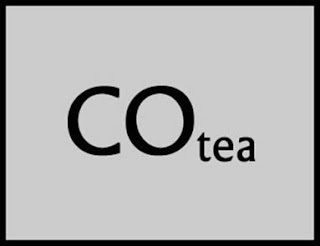Finding "COTT" and "COtea" For Soft Drinks Too Different, TTAB Dismisses 2(d) Opposition
In a rare victory for a pro se Applicant, the Board dismissed a Section 2(d) opposition to registration of the mark shown below, for "soft drinks flavored with tea," finding the mark not likely to cause confusion with the mark COTT, registered in standard character and stylized form for maltless soft drinks. The Board found the marks "substantially different in appearance, sound, connotation and commercial impression," and in particular saw "no basis ... to conclude that consumers would pronounce applicant’s mark 'as COT-TEA, the phonetic equivalent of COTT Tea.'" Cott Beverages Inc. v. Travis Ryan Barbieri, Opposition No. 91181911 (September 17, 2009) [not precedential].

Opposer Cott claimed that its mark is famous, but the proofs fell short. It did not submit evidence to show "how its sales figures compare to the three largest shareholders of the non-alcoholic beverage market, or to the brands of beverages sold by those companies." Sales figures alone "may be misleading and must be placed in some context in determining the fame of a mark." Therefore the Board concluded that the strength of the COTT mark "does not reach the level of playing a 'dominant' role in the process of balancing the du Pont factors."
The goods of the parties are considered to be legally identical and the channels of
 trade and classes of customers are presumed to be the same.Moreover, the goods are inexpensive items often purchased on impulse.
trade and classes of customers are presumed to be the same.Moreover, the goods are inexpensive items often purchased on impulse.The variety of beverages sold under the COTT brand also favored Opposer: "Although its products are confined to soft drinks, consumers would not find it surprising if opposer were to use its mark for soft drinks flavored with tea, particularly since opposer already uses its mark for teas and for soft drinks."
It was during the comparison of the marks that the fizz went out of Cott's opposition. The Board found Applicant Barbieri’s mark to be "substantially different in appearance, sound, connotation and commercial impression from opposers mark."
Opposer’s mark is COTT, while applicant’s mark depicts CO in large letters, with the word tea, the flavor and major ingredient of the goods, written in smaller letters below it. The effect of this depiction is that CO appears to be the source-indicating portion of the mark, with tea indicating the contents of the drink. As for pronunciation, while it is true that there is no correct pronunciation of a mark, the manner in which applicant's mark is depicted suggests that consumers would refer to it as CO or possibly as the individual letters 'CO,' followed by the word TEA. Contrary to opposer’s argument, there is no basis for us to conclude that consumers would pronounce applicant's mark "as COT-TEA, the phonetic equivalent of COTT Tea."
As to the connotations of the marks, the Board found that COTT "does not evoke any particular meaning other than possibly a surname." Applicant’s mark, however, emphasizes the CO portion, "thereby suggesting the connotation of perhaps an abbreviation for 'company,' or of the initials C.O., plus the word 'tea' to describe the flavor of the soft drinks." Or consumers may understand Applicant's mark "to be a play on the chemical formula for carbon dioxide, CO2."
Thus, the overall commercial impression of the marks is distinctly different and any similarities in appearance, based on the presence of the letters C, O and T, are vastly outweighed by the dissimilarities in the marks.
The Board concluded that the marks are so different that the first du Pont factor the other relevant factors, and so it dismissed the opposition.
TTABlog comment: Most pro se Applicants sooner or later get run off the TTAB court by the big-guy Opposer. Most of the time they deserve it. This time, I think not.
Note that this time, the pronunciation of the marks made a difference, despite the old saw that "there is no correct pronunciation of a mark." Had the Board strictly applied the old saw, would it have found that COTT might be pronounced like "COAT"? Then what?
Text Copyright John L. Welch 2009.




1 Comments:
"consumers may understand Applicant's mark 'to be a play on the chemical formula for carbon dioxide, CO2.'" Or carbon MONoxide, which is what I saw, but eeeewwww in either case. Who picked this name, anyway?
Post a Comment
<< Home